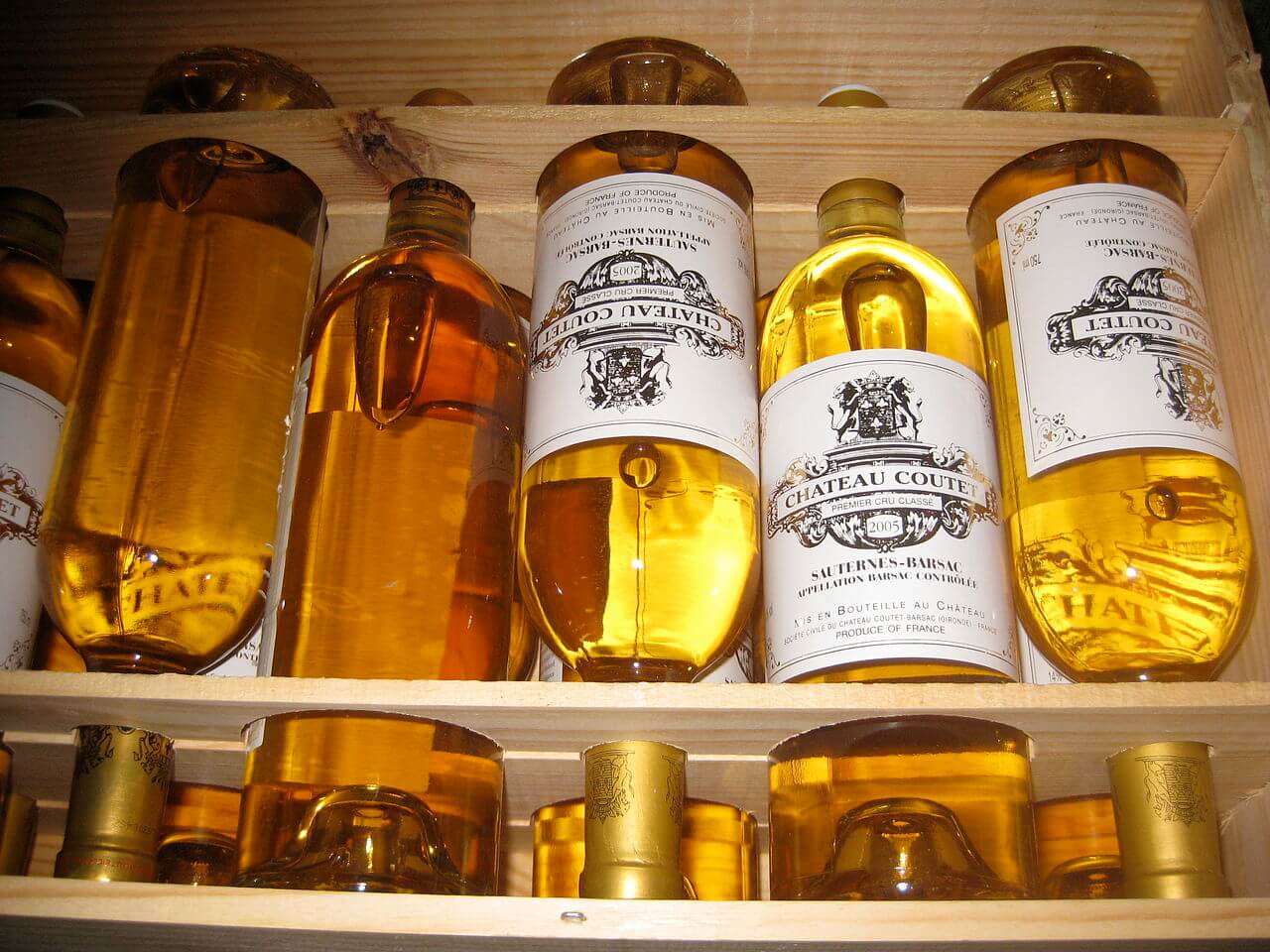7 Ways to Pair Sauternes Wine with Cuisine
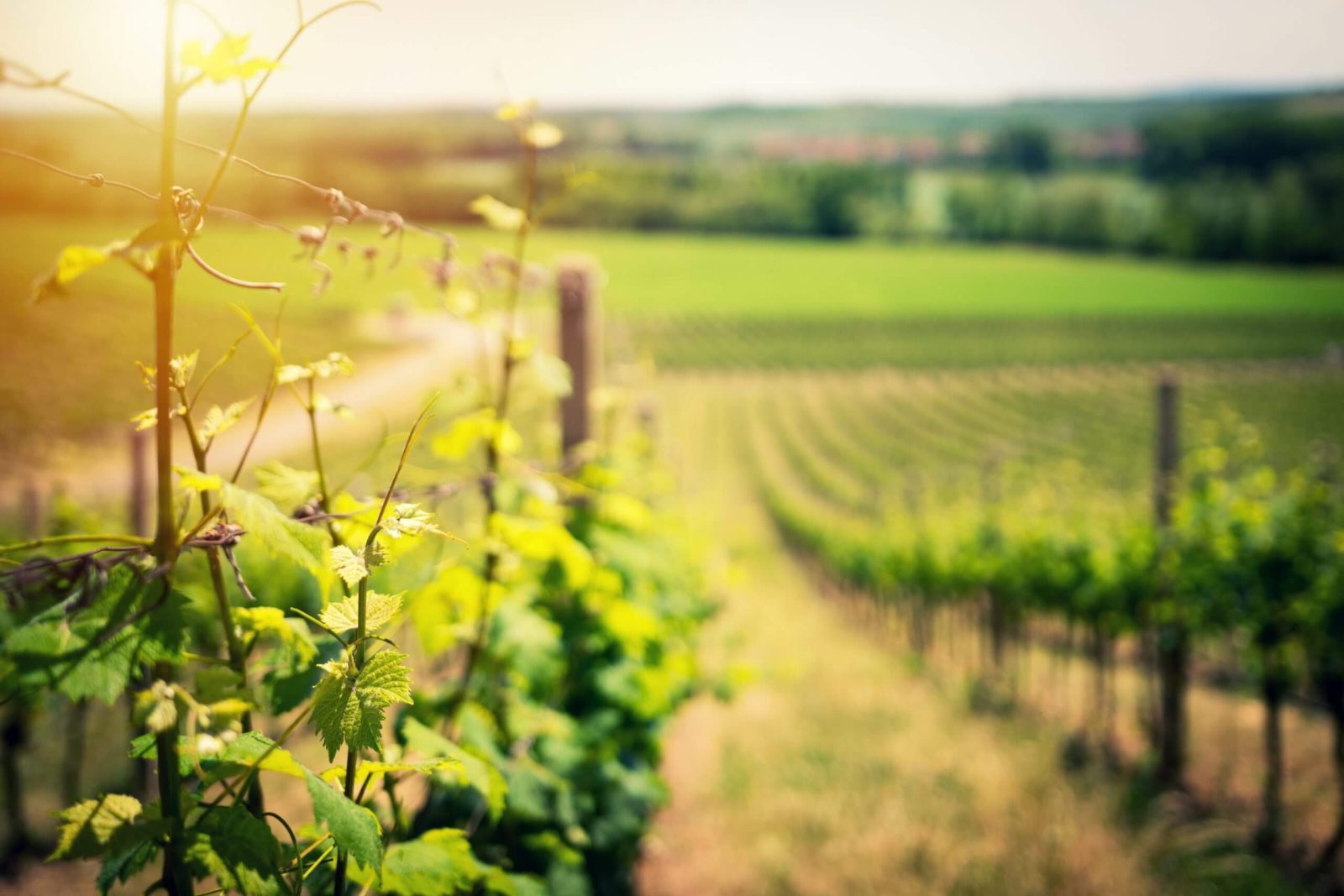
Imagine yourself invited to a palace dinner in the late 1880s. Finely dressed, you are escorted into the castle. An aperitif is offered. Then you are guided into the beautiful dining room to enjoy a multi-course meal.
After a few small plates (amuse-bouche) sent by the chef to tease the palate, the first real course of substance arrives. Historically, this would be a fish dish of salmon, sole, or turbot.
 7 Ways to Pair Sauternes Wine with
7 Ways to Pair Sauternes Wine with
The sommelier approaches and presents a bottle of wine. For this example, it may be Chateau Filhot, a sweet golden wine from Sauternes that is among the oldest of Sauternes wineries.
From the vantage point of a person now living in the 2020s, you may do a doubletake.
Sweet wine? With fish?
Yes.
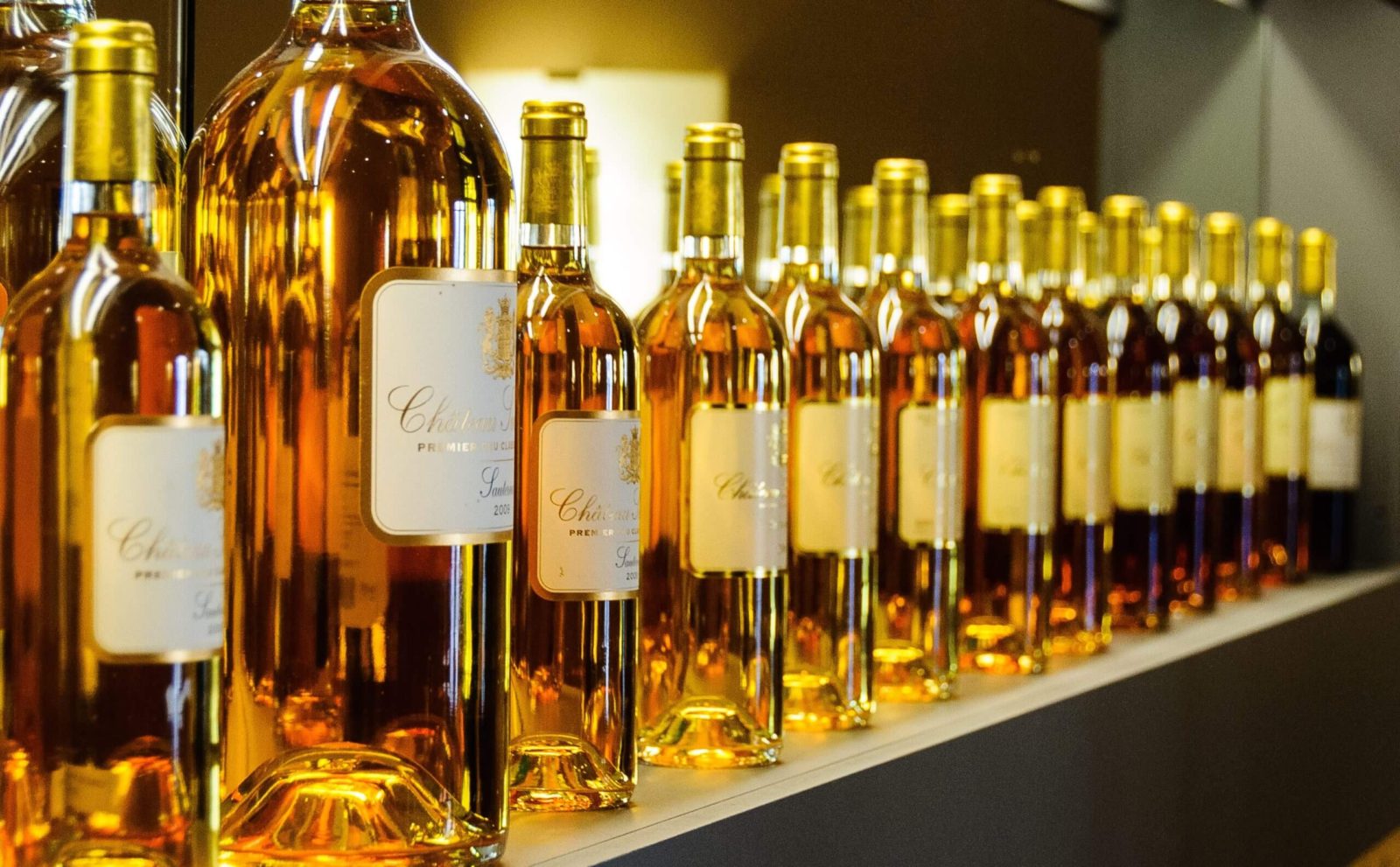
For much of its history, sweet Sauternes wine is traditionally paired with the first course of a meal during formal, multi-course dinners.
The dessert course in the 1880s would be paired with Champagne.

Yet as palace life — and long, multi-course dinners – is now a thing of the past, Sauternes is now mostly served at the end of the meal. A pairing with dessert.
Sauternes: Pairing Sweet Wine With Modern Courses
One reason why chefs were able to pair Sauternes with the fish course in the past is because Sauternes was not as sweet as it is today. Weather patterns were cooler, thus the wines had higher acidity and less sugar.
That said, depending on the producer and the vintage year, today you can find a Sauternes wine with a leaner, less opulent style.
This leaner style can pair very well with a first course of fish. For example, a briefly cooked salmon with just a touch of squeezed lime and fine sea salt would work fine. In this scenario, the sweet wine with racy acidity would contrast with the firm-textured salmon and its citrus accent.
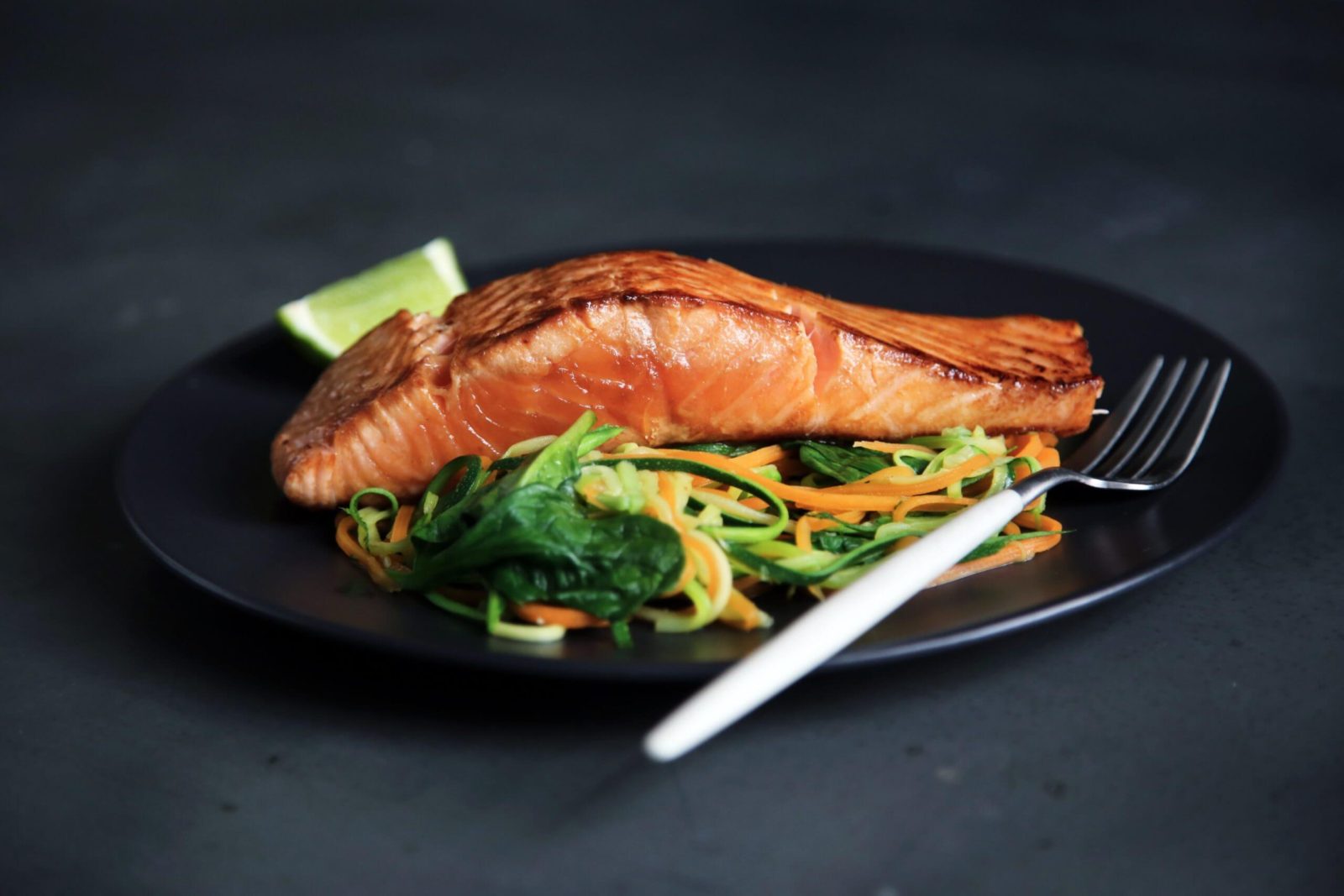
Emphasis on Sauternes and Food Pairing
Berenice Lurton of Chateau Climens was only 22 years old when her father divided his ten wine estates among his ten children. Knowing she had to prove her winery successful right away, she sought the help of famed Bordeaux chef Michel Gautier. The idea was to prepare Sauternes wine and food pairing ideas so consumers will know how to best enjoy the wines.
Aline Baly, co-owner of Chateau Coutet also believes that helping consumers understand how to pair Sauternes wine with food is a key to creating lifelong customers. She likes to send American journalists postcards with recipes for major holidays.
Yet according to author and wine expert Ian D’Agata, there’s no need to stress oneself to create the perfect pairing. “I try to think outside the box when it comes to Sauternes that will pair with normal, easy-to-prepare dishes like crustaceans, scallops, blue cheese, leeks, asparagus, etc.”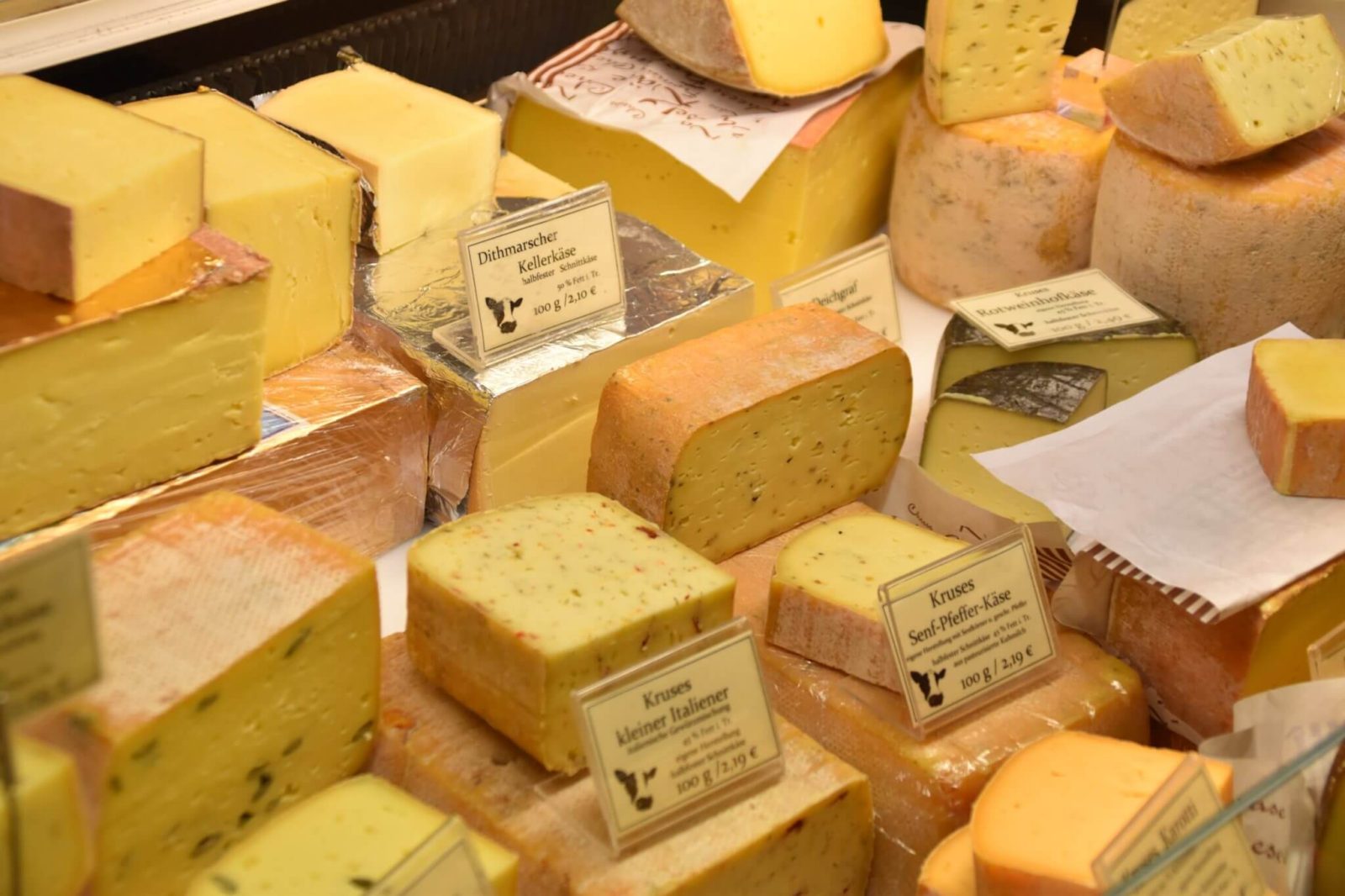
Sauternes: The Ultimate Aperitif
In the United Kingdom, by tradition many hosts pop open a bottle of French Champagne when guests arrive for a dinner party. In the USA, aperitifs have a wider range.
Yet in Bordeaux, it is customary to open a chilled bottle of Sauternes to serve as an aperitif. The bottle is attractively displayed in a bucket of ice, and guests are poured small amounts in appropriate glassware (white wine or digestif glasses).
Though enjoying a sweet wine at the start of the meal may sound curious, the vibrant acidity of Sauternes in addition to the residual sugar does indeed whet the appetite. Many Bordeaux hosts also have fresh oysters on hand as the appropriate food pairing.

Sauternes: Tradition with Chicken
In Bordeaux – the home of Sauternes wine– Sauternes is commonly paired with chicken for a familial Sunday night dinner.
I was a guest at such a dinner several years ago. It was similar to any family dinner one might experience in the United States.
Except the dinner took place in a magnificent castle that dated from 1777.
You can imagine my anticipation as the car approached the castle-like estate of Nicole Tari, owner of Chateau Nairac.

Though Ms. Tari did live in a magnificent castle, dinner did not take place in the formal dining room.
And not a footman, or even a sommelier, was in sight.
Instead, we enjoyed a very pleasant evening in the warm, cosy kitchen, where Ms. Tari served a delicious chicken dish she made herself.
With the dinner, she poured Sauternes wines from different vintages so I could see how the age of the wine, as well as the ripeness of that vintage, changed the pairing.
Sauternes: American Influence with Turkey
Aline Baly of Chateau Coutet loves telling her story about how she discovered how well a sweet Sauternes can pair with turkey.
“The first Thanksgiving my mother spent in Bordeaux she made a turkey,” Aline explains. “But it was very dry. My uncle went to the cellar of Chateau Coutet and found a bottle of Sauternes from a riper vintage. With this wine, the turkey was magnificent.”
Note: The recipe for Aline’s mother’s turkey (the moist revision) follows the end of this article.
Sauternes: With Asian Food
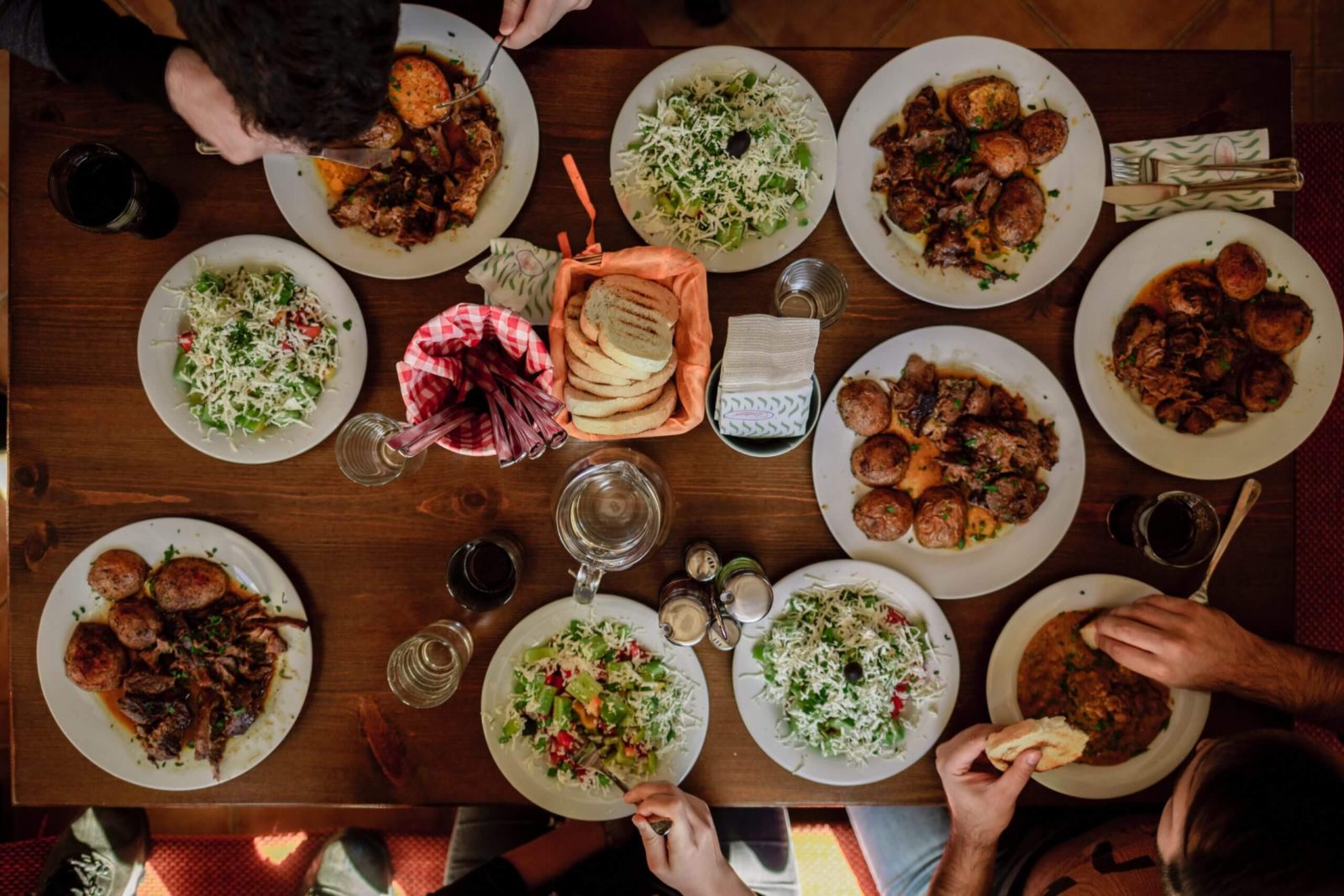
Fabrice Dubourdieu, who owns Chateau Doisy Daene in Sauternes with his family, has spent a great deal of time researching the best ways to pair Sauternes with Chinese food. “I like to focus on matching the weight, age, and style of a particular Sauternes with a specific dish,” he says.
In terms of Asian food, Aline Baly adds that Sauternes wine pairs quite nicely with Indian cuisine. “Recently, our Indian intern prepared a fabulous curry dish for us, that paired well with Chateau Couteau Sauternes.”
In thinking about the curry and Sauternes pairing, one key reason it works is because the subtle East Indian spices in the Sauternes wine match with the actual spices used in the curry.
Sauternes: With Duck and Foie Gras
Foie Gras is the traditional pairing for Sauternes in restaurants. The creamy duck liver complements the texture of the Sauternes wine. At the same time, the sweet wine with its hint of East Indian spice adds dimension to what can sometimes be a neutral dish.
When duck is prepared à l’orange (with a sweet, savory orange sauce) it is a perfect match for Sauternes. The reason is because the wine also has aromas and flavors of orange and spice.
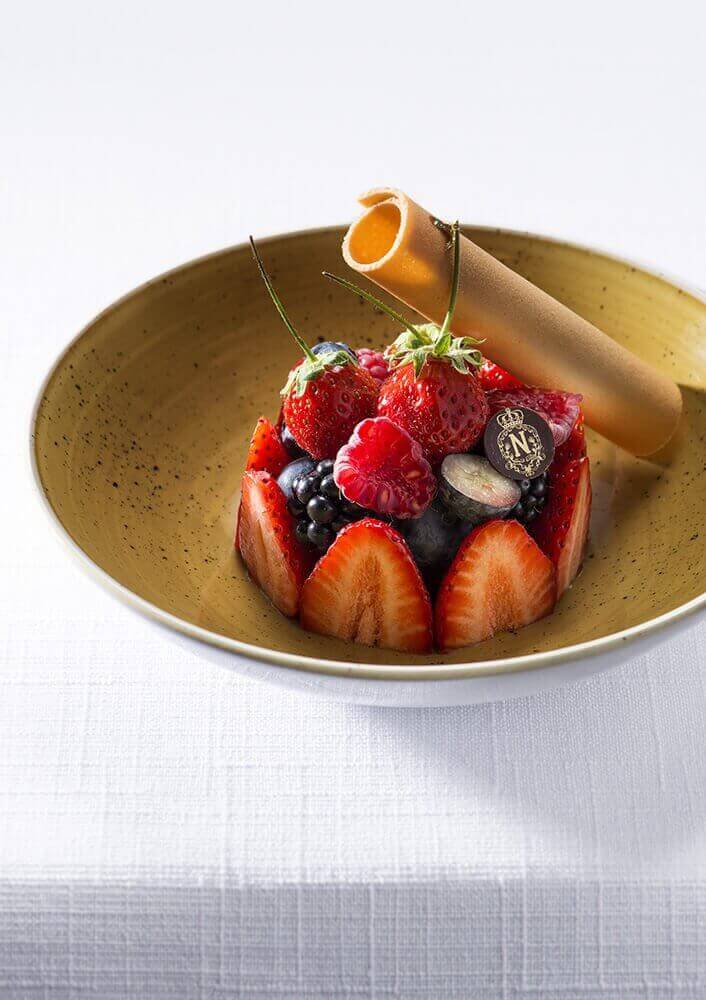
Sauternes with Dessert
By long tradition, people of Bordeaux do not like to encourage Sauternes wine paired with dessert. A story about the wife of the Chateau Climens estate manager (Madame Janin) in the 1980s illustrates this point. By various accounts, Madame Janin was so against a “Sauternes and dessert” pairing that she refused to sell Chateau Climens to anyone who had this pairing in mind.
But times have changed. Today the Bordelais realize that to sell and popularize their Sauternes wine, people should feel free to serve it as they like.
Advice For Pairing Sauternes with Dessert
When serving Sauternes for dessert, it is important that the Sauternes wine be the dominant flavor. As it is by nature sweet, rich, and dense, the dessert should be more neutral or have contrasting flavors. A lighter dish such as a Pavlova (a meringue-based dessert) or a bitter-chocolate dessert is a good option.
Sauternes: The Story of Its Magic
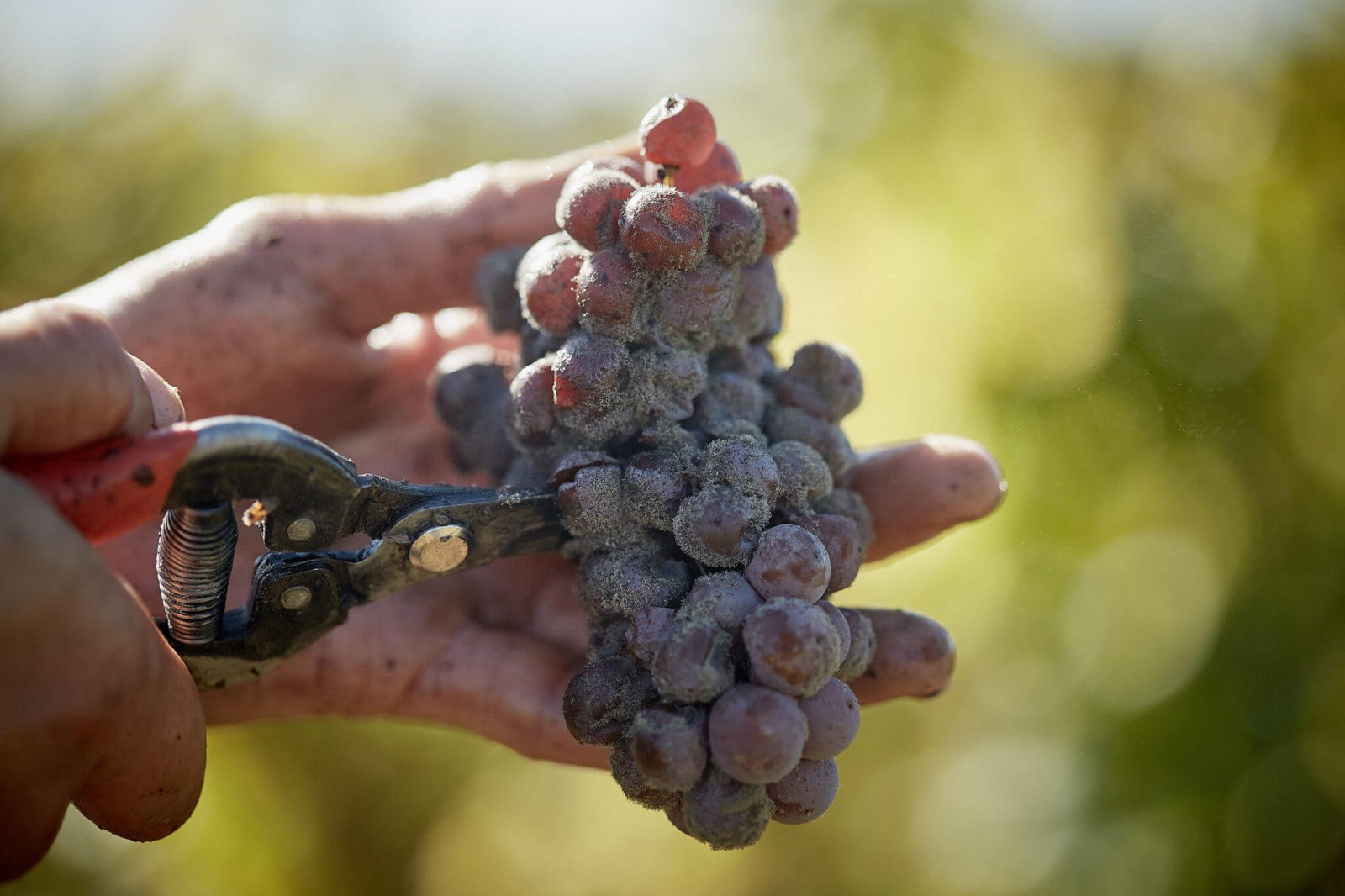
Like most wines in the Old World, Sauternes wine is named for the region in Bordeaux where the grapes are grown.
Grapes common to the Sauternes region (Sauvignon Blanc, Semillon, and Muscadelle) remain on the vine after the harvest.
The special climatic conditions of Sauternes encourage botrytis.
Though this is also known as “noble rot,” the bottom line is that the grapes desiccate, concentrating their sugar content.Many vineyard visits are required to gather these tiny, shriveled berries at the point of perfection.
After vinification, the wine matures in barrels with varying amounts of new French oak.
Sauternes: What is Its Future?
While producing historic Sauternes wines has its challenges, the future looks encouraging. In 1992 AXA Millésimes acquired the Sauternes based Chateau Suduiraut. In 1999 LVMH bought Chateau d’Yquem.
Then in 2006 the Sauterne-based Chateau Guiraud estate was bought by Olivier Bernard of Domaine de Chevalier, Stephan von Neipperg of Château Canon-la-Gaffelière, Xavier Plenty, manager of Chateau Guiraud, and industrialist Robert Peugeot.
In 2012 Bernard Magrez added the Sauternes house Clos Haut-Peyraguey to his portfolio, while Silvio Denz took on Chateau Lafaurie-Peyraguey.
The acquisition of top Sauternes estates signals that Sauternes is here to stay. Sauternes is a historic and delicious wine that deserves its place at every table.
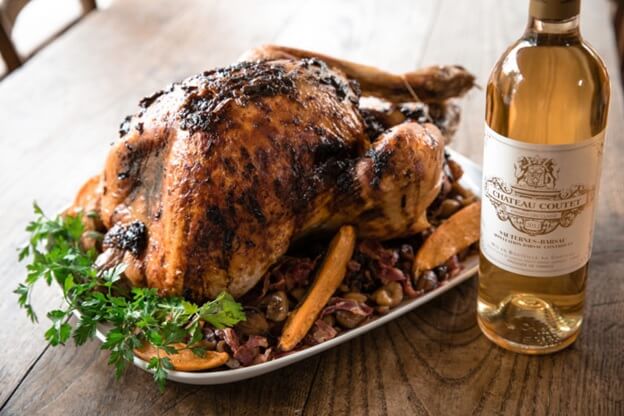
Chateau Coutet 2012 Sauternes: The perfect turkey pairing
Below you will find a decadent recipe for a special turkey dinner.
The ingredient of Tamarind in the turkey dish is similar to what you will find in the Sauternes wine.
Try it.
You will see how well the spicy and sweet nature of the recipe pairs together with the Sauternes wine.
Tamarind-glazed turkey, Sauternes chestnuts and sweet potato chips
This recipe has a lot of spice.
Aline Baly of Chateau Coutet likes it paired with her aged 2012 Sauternes wine from Chateau Coutet.
Ingredients:
1 large (~5kg) turkey
250g butter, at room temperature
400g tamarind paste or sauce
A thumb-sized piece of fresh root ginger, grated
8 cloves of garlic, crushed
4 tbsp. sugar
2 tbsp. dark soy sauce
1 tbsp. dried red chili flakes
A handful of fresh mixed herbs
1 lemon, juiced
1.2kg sweet potatoes, cut into wedges
120ml olive oil
A handful of fresh thyme
A handful of fresh sage leaves
150g pancetta, roughly diced
600g cooked, peeled chestnuts, quartered
1/2 tsp. nutmeg, grated
3 tbsp. white flour
2 cups chicken stock
Sea salt and black pepper
Preparation:
- Preheat your oven to 200˚C, and ensure that your turkey is at room temperature. Pat the skin dry with kitchen towel, then place it on your largest oven tray, and pour 2 cups of water or stock into the base of the tray.
- Make an incision between the skin and breast of the turkey and stuff it with 200g butter.
- Heat the tamarind paste in a pan with ginger, 4 cloves of crushed garlic, sugar, soy sauce, chili flakes and a cup of water. Bring to a boil and allow to reduce (or add water) until it has the texture of thick runny honey. Smother it all over the turkey.
- Place 1 lemon, cut into quarters, and the handful of fresh herbs into the cavity of the bird, with a generous pinch of sea salt and black pepper.
- Place the turkey in the oven, and immediately turn the heat down to 180˚C. Cover the turkey loosely with foil after 20 minutes then allow to cook until the juices run clear (precise time depends upon the size of your turkey) and the glaze is golden. Remove the foil roughly 20 minutes before you estimate the turkey to be cooked.
- About 20 minutes before the turkey is to be removed from the oven to rest, line a baking tray with foil. Toss the sweet potato wedges in the remaining crushed garlic, olive oil, thyme and sage leaves. Season generously with sea salt and roast at 180˚C for roughly 45 minutes, until soft and golden.
- Remove the turkey from the oven and allow to rest on a carving board at room temperature for at least 30 minutes before serving.
- 20 minutes before you’re ready to eat, fry the chestnuts and pancetta in the remaining butter until lightly golden over a medium-high heat. Turn the heat to high and add the nutmeg before deglazing with sauternes.
- Cook and stir until the wine has evaporated off then remove from the heat and put a lid on to keep warm.
- Drain all of the juices from the turkey into the tray by tipping the bird. Skim off as much fat as possible using a spoon, then return the pan to a high heat. Stir in the flour and allow to cook for one minute, before whisking in 2 cups of stock. Allow to boil down until reduced to your liking.
- Carve and serve the turkey with the Sauternes chestnuts, sweet potato wedges and gravy.
Pair with a bottle of Château Coutet 2012
This recipe was specially created by Alex Yandell
If you like this article, you may like
– Exploring St. Tropez
– Guide to the Napa Valley
Author Marisa D’Vari is a Luxury Travel Expert

